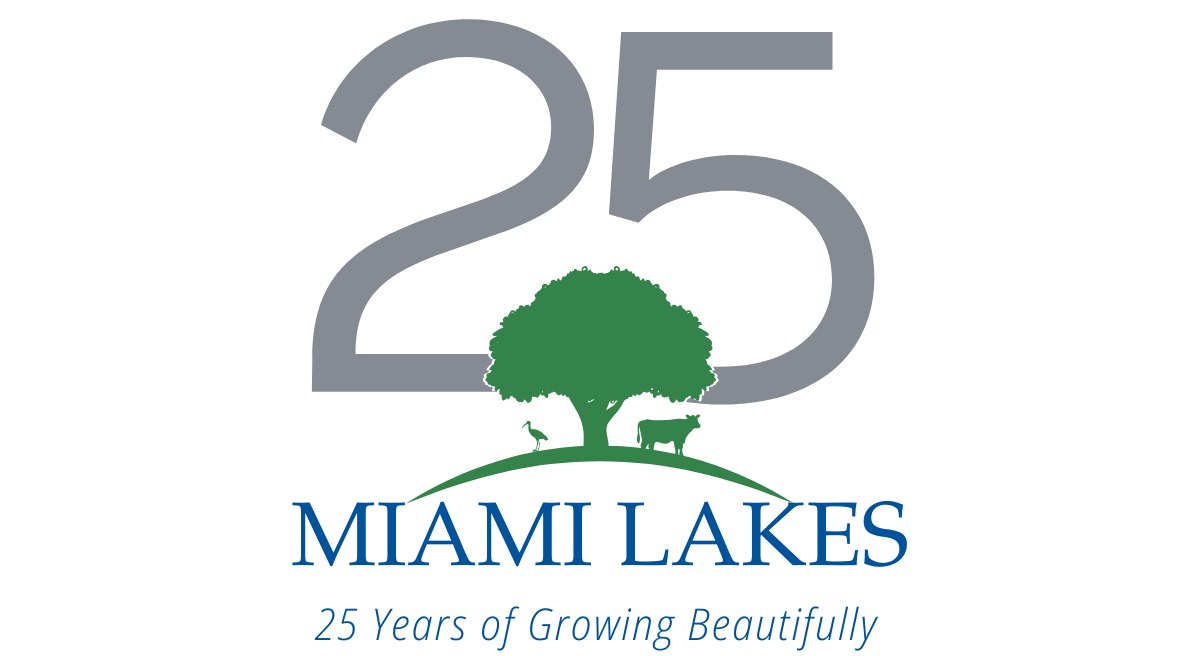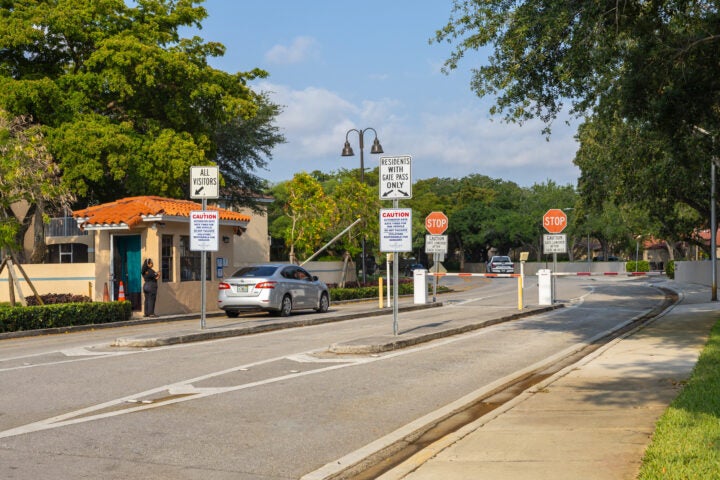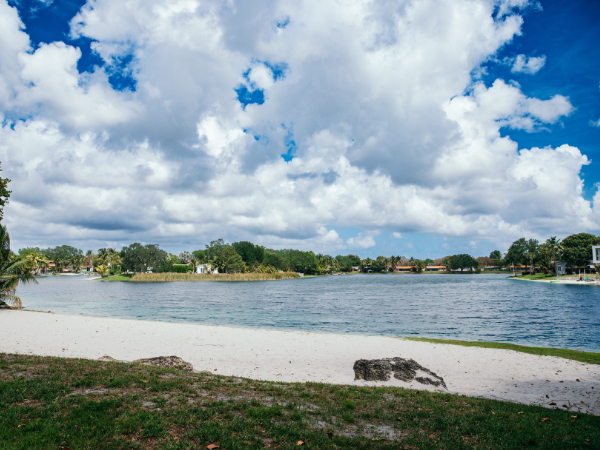Overview
A Special Taxing District is a designated area whereby a majority of property owners agree to allow the Town of Miami Lakes to provide special services through a non-ad valorem assessment. The Town oversees six active districts providing services to approximately 2,400 households throughout the Town. The types of services provided are security guard and lake maintenance services.
These districts are petitioned for and voted on by the residents within the area. These services are beyond those traditionally provided by municipal government and are billed to property owners as non-ad valorem assessments included in their annual property tax bills. By creating these assessment districts it gives communities the opportunity to provide services in public areas of their neighborhoods which could not be conveniently done otherwise.
Service Districts
FAQs
Special Taxing Districts

What is a Special Taxing District?
A Special Taxing Districts is a specific area created to provide public improvements and special services through a non-ad valorem assessment. Types of services provided are: neighborhood street lighting, security guards, multipurpose landscaping and lake maintenance, and certain capital improvement projects.
Under what legal provisions are these districts created?
The Miami-Dade County Code provides authority under Chapter 18 and Chapter 28.
Can the Town of Miami Lakes create and manage these districts?
Effective November 8, 2016, the Miami-Dade County Code was amended to include § 18-3.1 setting forth Municipal special taxing districts.
What is the process to create a resident petitioned Special Taxing District?
An official incorporated homeowner’s association (HOA), for the area under consideration, or in the absence of the HOA, at least 10% of the area property owners, submit a letter of intent to the Town of Miami Lakes, 6601 Main Street, Miami Lakes, FL 33014. The letter must describe desired improvements, district boundaries and level of service.
What does the process consist of?
I. The Petition
Town Staff prepares a petition package, based on the letter of intent. This petition will provide a description of the proposed improvements, as well as the range of assessments estimated for the project.
For security guard districts, prior to the preparation of the petition package:
• A traffic study by an independent consultant, and at the expense of the community, may be required in security guard districts involving street closures.
• The Town’s Public Works Department must review the implications of any street closure.
• An indication by the appropriate County Fire/Rescue and Town’s Police Department that the delivery of emergency services will not be hampered or impeded by a road closure.
For road improvement projects, full right-of-way dedication will be required prior to preparation of the petition package.
Community volunteers then circulate the petition among all resident property owners. A maximum of four months is allowed for the collection of signatures. The petition is returned to and validated by Town Staff. The homestead exemption for each property owner is verified as an indication of residency. For new property owners who become proposed district residents after the filing date for homestead exemption may provide a notarized affidavit confirming their residency.
The petition must contain signatures of 50% or more of the resident property owners for the process to continue. The petition and the results of the validation are filed with the Town Clerk.
II. The Cost & Feasibility Study (for valid petition request)
Town staff prepares a report detailing improvements, cost estimate, assessment method, and district boundaries. The report is then filed with the Town Manager, who in turn files his written report and recommendations with the Town Council, and a formal public hearing is scheduled. Prior to the public hearing, all district property owners are invited by mail to an informational community meeting. Facts pertaining to the proposed NSD are presented to the district residents and questions by the community pertaining to the process and the proposed NSD are discussed.
III. District Creation
All property owners are invited to a Public Hearing regarding the creation of the proposed special taxing district. To which all property owners are invited by public hearing notice by the Town’s NSD Liaison. Notices are published by the Clerk in a newspaper of general circulation and are also posted in five public places within the district. The Town Council conducts a Public Hearing at which time residents or concerned citizens may speak on the proposed special taxing district. If the Town Council decides that the proposal should move forward, an ordinance creating the district is adopted. The assessment roll resolution and ballot language for district ratification is typically adopted at the same public hearing as the creation ordinance.
IV. District Ratification
Elections are conducted by mailed ballot on an available election date set by the Miami-Dade Elections Department. All registered voters residing within district boundaries are eligible to vote. A majority vote of returned ballots in favor of the project is needed to ratify district creation. If the vote does not pass, the creation ordinance is rescinded, and the proposed district will not move forward.
V. Collection of Special Assessments
Those districts which are approved by the electorate are billed in advance for each tax year (January through December) and are included as an itemized portion of the annual combined tax bill.
VI. Implementation Phase
Final engineering of capital improvements, bidding (for capital improvements and/or service) and construction take place. The improvement would then be placed in service, or the service would commence.
How long does it take to create and implement a Special Taxing District?
It varies, according to the amount of time to receive a valid petition, Board agenda calendar and timing for the election. For most districts the process takes several months up to one year. Security guard districts, because of traffic studies and delivery of emergency services issues, require a longer timeframe.
Can residents request improvements or additional services to the districts?
For services beyond the original scope described in the ordinance creating the district, residents must follow the petition process as described above for an amendment to the ordinance.
For services that are within the scope of the ordinance, the services or improvements would be subject to the financial condition of the district.
How is the cost of services calculated?
The calculation of each district property’s special assessment is based upon the district specific assessment method and project cost (methods used are front footage in street lighting, road and water projects; square footage in landscape maintenance districts; and units, generally parcels in security guard and lake maintenance districts). Project costs include prior year’s expenses, any anticipated expenditure in the coming year and administrative costs.
How is the assessment billed and collected?
Routine ongoing services such as lighting, landscape, and guard services are billed to residents through their annual property tax bill under the Non-ad Valorem assessment category. Special assessments are billed in advance for each tax year and are included as an itemized portion of the annual combined tax bill under the non-ad valorem section. They are payable at the time the real property tax bill is due.
Is a lien placed on my property if I do not pay the special assessment?
Yes. Unpaid special assessments, similarly, to unpaid ad valorem taxes, will cause a lien to be placed on your property and the certificate sold the following June.
Do security guard districts restrict public access to the district area?
No. Public access to streets encompassed within a district is never prohibited. A requirement of Chapter 18 of the Miami-Dade County Code is that special taxing districts can only be created on public roads.
All cars must come to a complete stop when they approach the guardhouse. Once the vehicle has stopped at the guard gate, the guard will register the tag number and description, and will then allow the car to enter the district. Visitors do not need to provide any information to the guard. Where resident lanes exist with card control access, the residents drive through once the gate arm has been activated by their card.
How can I obtain a clicker for residential lane access?
To obtain a clicker for residential lane access in a Special Taxing District, you can complete a click card application through the Miami Lakes official website.
Gate Access Application for Special Taxing Districts
For any inquiries, contact John Yanes, the Special Projects Manager, at yanesj@miamilakes-fl.gov.
Who may I contact for additional information?
You may contact John Yanes by phone at (305) 364-6100, Extension 1234, or via email at yanesj@miamilakes-fl.gov.




